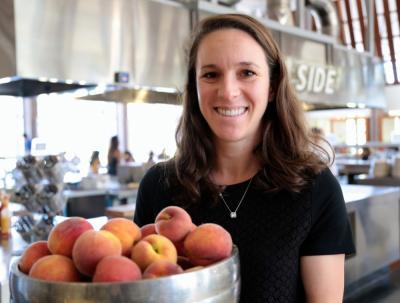How UCSB is going local, and what it means for you
For almost 10 years, the University of California at Santa Barbara has been slowly adding local produce to its residential dining programs. As the largest purchaser of wholesale produce in Santa Barbara County, UCSB’s residential dining services is a pilot project—and they’ve succeeded. At about 10,000 meals a day or 2.5 million meals a year, the key to the university’s success was starting small: adding five or six local and organic items to the salad bar.
A group of students led by professor David Clevland tracked the program and published a paper. “One of the conclusions of the paper is that it is an iterative process,” Cleveland says. “You always have to begin where you are; you can’t make a total radical transformation. You figure out how to gradually move in the direction you want to go and then make incremental changes.”
According to the UCSB website, the food currently served at UCSB is comprised of 50% fresh produce grown on local farms (within 250 miles), over 25% organic and/or sustainably grown without pesticides, and 38% of total food purchases are considered sustainable, according to the University of California’s definition of sustainable food.
“It’s often not possible to maximize social, environmental and economic sustainability at the same time,” Cleveland explains. “There are tradeoffs, conflicts. The ‘triple bottom line’ in mainstream business really means that economic goals are first and they’ll work on the other ones as long as it increases their profit. The UCSB-FDP collaboration turned that upside down because it was viewed as a community project in which all of the parties valued the non-monetary benefits of their work as much as or more than the financial benefits.”
Image: Danielle Kemp, residential dining services’ dietitian, holds a bowl of locally grown peaches. Credit: Spencer Bruttig

